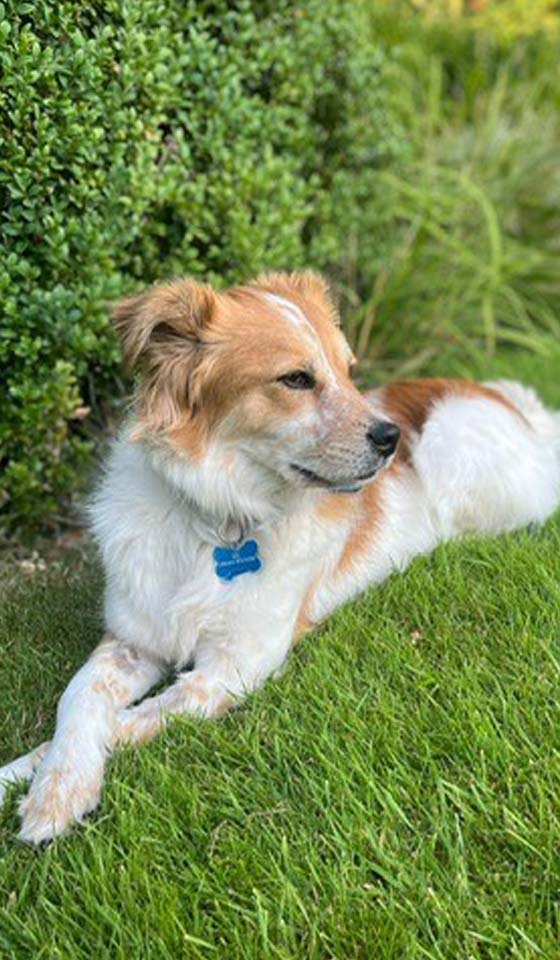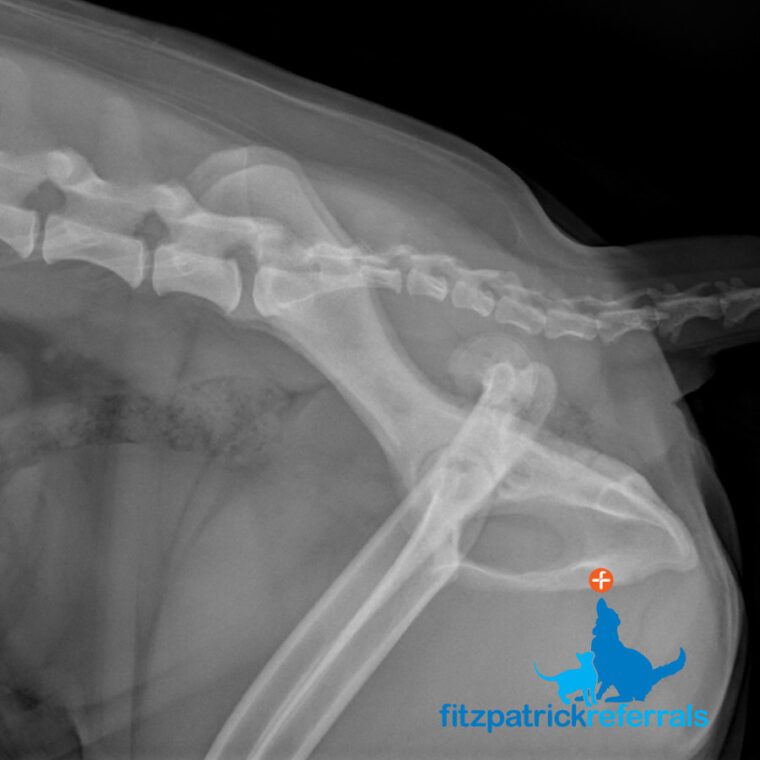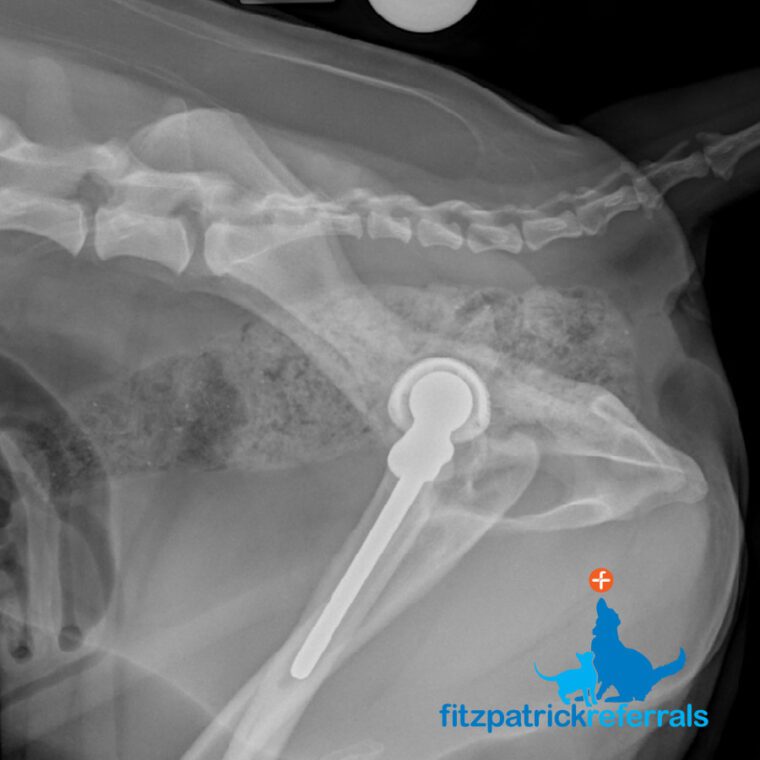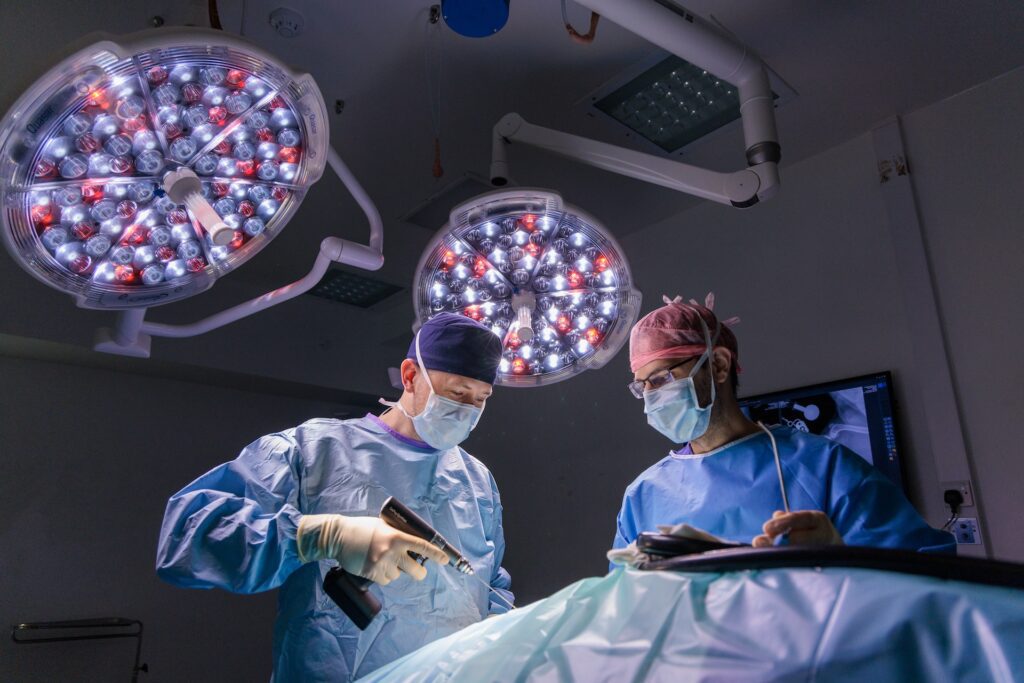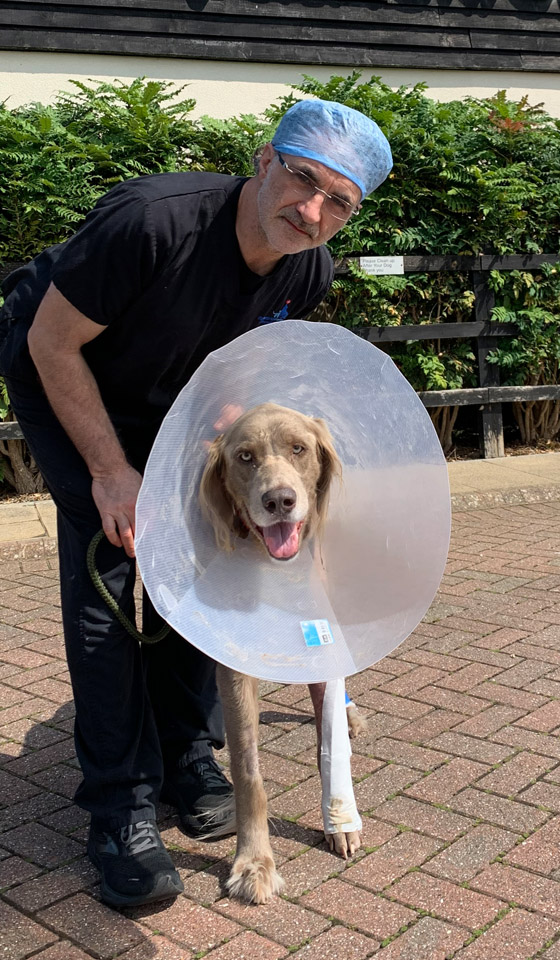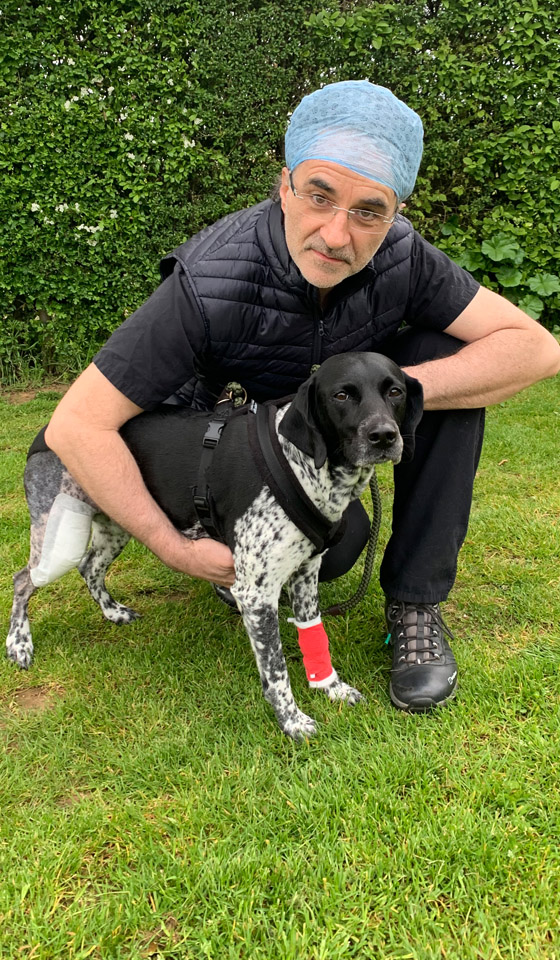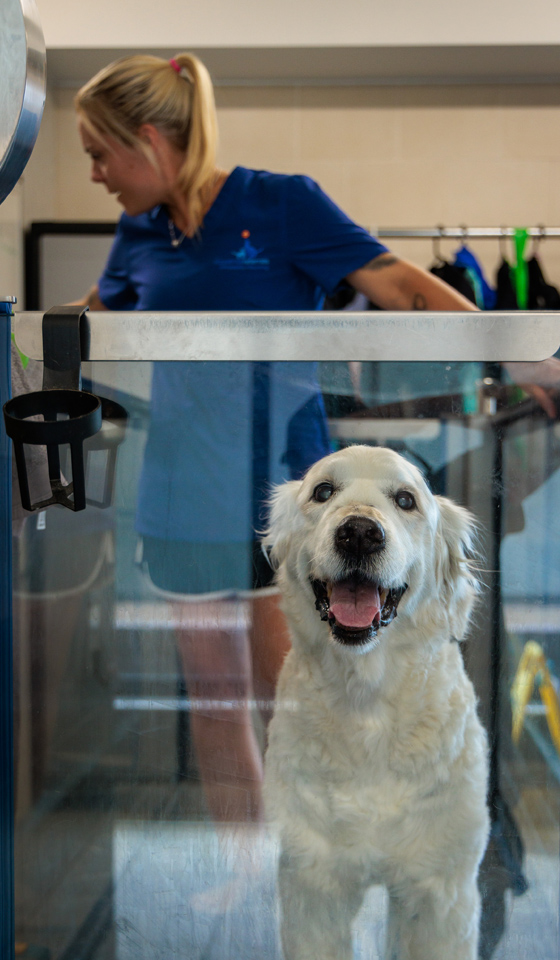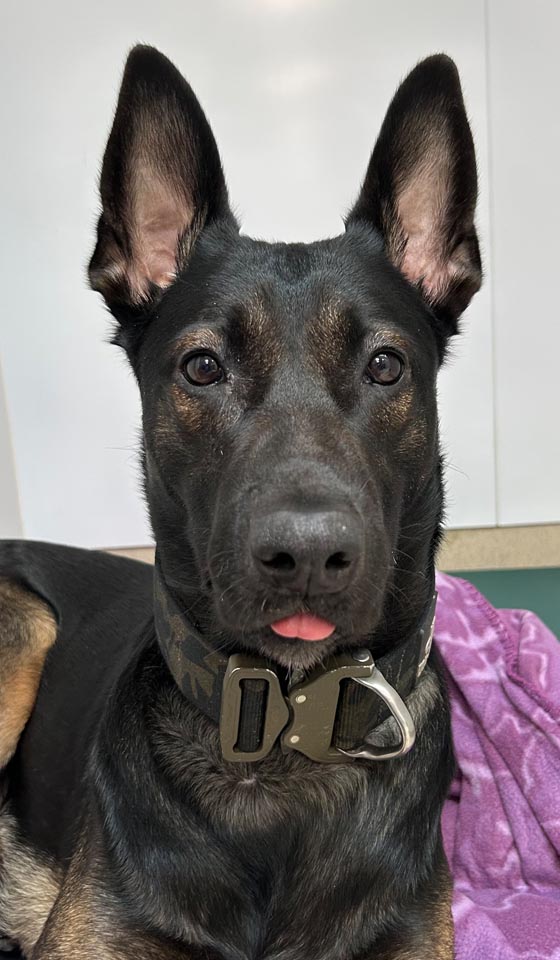Two-year-old Ralphie’s mum has kindly shared in her own words, his remarkable story, from overcoming adversity to thriving in his second chance at life.
By Yvonne, Ralphie’s mum, December 2022
Meet Ralphie.
Several weeks after adopting this bright, happy, adorable and deeply affectionate bundle of fur, we noticed that he had what appeared to be a slight limp, so we took him to our family vet, whom we know well and trust implicitly, for further examination.
The x-ray results revealed the most severe hip dysplasia she’d ever come across. The left hip joint and femur head had completely worn away and what was left of the femur had travelled north of the hip. His leg was totally reliant on soft tissue for mobility, hence the limp. The pain must have been excruciating, but our little trooper never made a sound.
Treatment options
Our vet sent the x-rays to the orthopaedic vet to whom she routinely refers patients for surgery, but unfortunately, his verdict from him was no more encouraging; he said that there was nothing he could do, and that our only hope was a referral to Fitzpatrick’s.
And thus, it came to pass that Ralphie, possibly the luckiest dog in the world, fell into the charge of Senior Surgeon Jan Janovec and the incredible team at Fitzpatrick Referrals.
Having performed further x-rays and scans, Jan explained that the surgery would not be easy and that given the state of wear, success couldn’t be guaranteed. He would have to insert a new hip joint and femur head, and, if possible, attempt to tease the leg back into place and reinsert it into the joint.
The greatest risk during surgery was that the femur might shatter, thereby rendering the insertion of the new head impossible.
We questioned whether it was fair to put Ralphie through such an ordeal, but Jan’s response was that he’s a healthy, young (two-year-old), dog who could go on to lead a long and normal life, and that without surgery the prognosis was very grim because things would only continue to deteriorate. We’d noticed that the limp had indeed got worse over the summer, so without immediate intervention, it was inevitable that he would become immobile.
Surgery
The procedure was extremely delicate, and based on what our own vet had told us, we sensed that Jan would be stretching the boundaries of what was medically possible to their limit. In the event, we need not have worried, because Dr Jan performed a minor miracle.
The operation took double the expected time.
We tried to keep ourselves busy with mindless tasks throughout the morning, barely daring to mention Ralphie’s name. When Jan rang in the early afternoon to say that the operation was over and that it had gone exactly as hoped, we finally felt able to breathe again.
Jan sounded exhausted but satisfied; he’d managed to get the leg back into position and, barring infection or postoperative mishap, Ralphie should make a good recovery providing that we followed all the convalescent guidelines.
The shock of collecting him from Fitzpatrick Referrals three days later was far less than we’d expected. The incision wound was relatively small, and he was full of beans and not in any hurry to leave the practice, a clear indication of the love and care he’d received from the fabulous ward team.
Recovery
Convalescence wasn’t easy; it involved six weeks of cage rest and careful monitoring throughout, and we made sure that someone was with him the whole time. He’d been through so much, and being a rescue dog and familiar with life in a cage, we didn’t want to risk sparking any trauma.
Initially, he was only allowed out of the cage for toilet breaks and very short walks with the help of a sling around his abdomen for support.
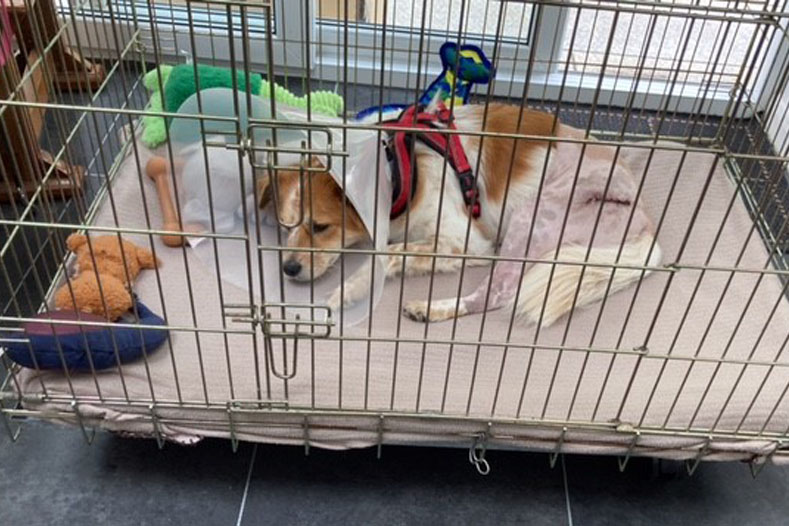
The hardest part was caring for his mental health and keeping an intelligent, active dog engaged, particularly during the first two weeks when he had to wear the ‘collar of shame’.
My husband built a platform on coasters, which meant that we were able to wheel Ralphie around downstairs, thereby providing a change of scene. We used a dog ramp to get him in and out of the cage and all of us got the hang of the routine very quickly.
We took it in turns to sleep on the sofa beside him at night, which he seemed to find comforting, although from our perspective it took us back to the newborn baby years. We’d quite forgotten the benefits of an undisturbed night’s sleep!
After six weeks, Ralphie was allowed out of the cage and his little garden walks got longer. We attached leads to a sofa in the kitchen for daytime use, and one to a cupboard leg in the bedroom, with soft but firm bedding because it was critical that he be kept on level flooring so as not to dislodge the new hip.
We’d carry him up at bedtime, but having been used to slumbering on our bed, (“from the streets to the sheets”, as a friend says!), the pleading, confused eyes as he gazed up at us from his new sleeping area were heart-rending.
How does one explain the ‘cruel to be kind’ philosophy to a doting, trusting animal whose life has been turned upside down?
At nine weeks, we returned to Godalming for further scans and an update, and Jan was delighted with Ralphie’s progress.
Ralphie was a truly challenging case. By the time I saw him, he had had his hip joint dislocated for quite a while and as a result, the bones that were meant to hold the implants were significantly deformed.
The surgery would only be a success when combined with strict aftercare and Ralphie’s family has done an excellent job helping him through the recovery period. It’s a pleasure to see how much he is enjoying his new pain-free life.
Four months on
We are now at 16 weeks and Ralphie is almost back to normal, although we will continue to limit his interaction with other dogs for a few more months. He no longer limps and has become a much brighter, sparkier dog, probably because he’s pain-free for the first time in his young life.
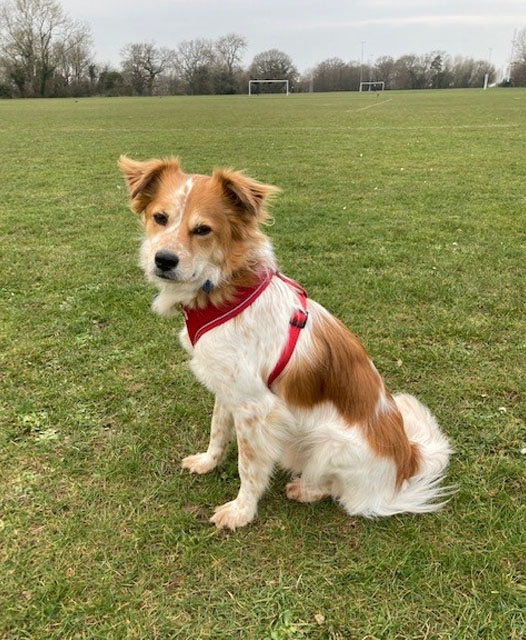
We can’t thank Jan and everyone at Fitzpatrick Referrals enough for what they have done for our precious little family member.
Ralphie was rescued from a Romanian kill shelter where he’d been on death row having been scheduled for euthanasia with only days to go.
His is a true rags-to-riches story, and one which I was hesitant to reveal for fear of dissuading others from adopting, but it has such a happy ending that I felt I must.
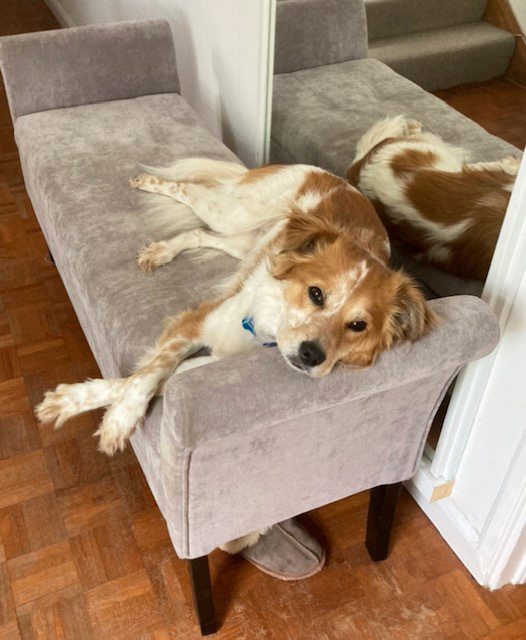
It is one filled with hope, life and love, because Ralphie now leads a life in which he is adored, feels secure, knows that he will be safe forever, and where, thanks to the dedication of everyone at Fitzpatrick Referrals, his quality of life is now second to none.
I’ve had people criticise us for caring so much because “it’s only a dog”, to which I reply that I feel sad for them. Those who ‘get it’, get it.
All I can say is thank you, Dr Jan, Professor Fitzpatrick, your amazing team of people, and everyone else for truly getting it.
Thank you Yvonne for sharing Ralphie’s remarkable story.
Related conditions
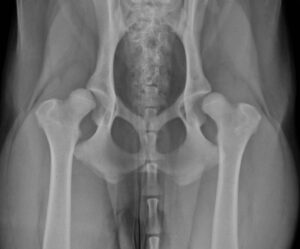
Hip dysplasia
The word “dysplasia” means “abnormality of development”. Hip dysplasia is a canine genetic condition in which there is a tendency towards development of hip…

Rehabilitation of hip dysplasia
Physiotherapy has an important role in the management of hip dysplasia. Whilst hip dysplasia is a progressive disease, the condition can be affected…
